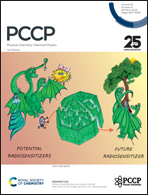A triple Fano resonance Si–graphene metasurface for multi-channel tunable ultra-narrow band sensing†
Abstract
In this work, a dielectric metasurface composed of a silicon nanodisk etched with a square hole is proposed. By introducing C4v symmetry breaking, the symmetry-protected bound states in the continuum (SP-BIC) is transformed into a quasi-BIC (Q-BIC), simultaneously inducing triple Fano resonances in the near-infrared light band corresponding to one dipole and two Q-BIC resonances. The characteristics of Q-BIC resonances are elucidated through multipole decomposition and near-field distribution analysis. Subsequently, monolayer graphene is integrated into the Si metasurface. The light field in the composite metasurface can be flexibly modulated by changing the Fermi level of graphene. This modulation enables optimal transmission with an enhancement of up to 252%, while the confined electromagnetic energy experiences a remarkable increase of about 1020%. Simulation results demonstrate that the Si–graphene composite metasurface exhibits a high refractive index sensitivity of 162 nm RIU−1, accompanied by a figure of merit of 170.526 RIU−1. This composite metasurface holds promise as a high-performance sensor in the near-infrared band and has potential for application in the fields of active tunable optical devices and biochemical sensing.



 Please wait while we load your content...
Please wait while we load your content...